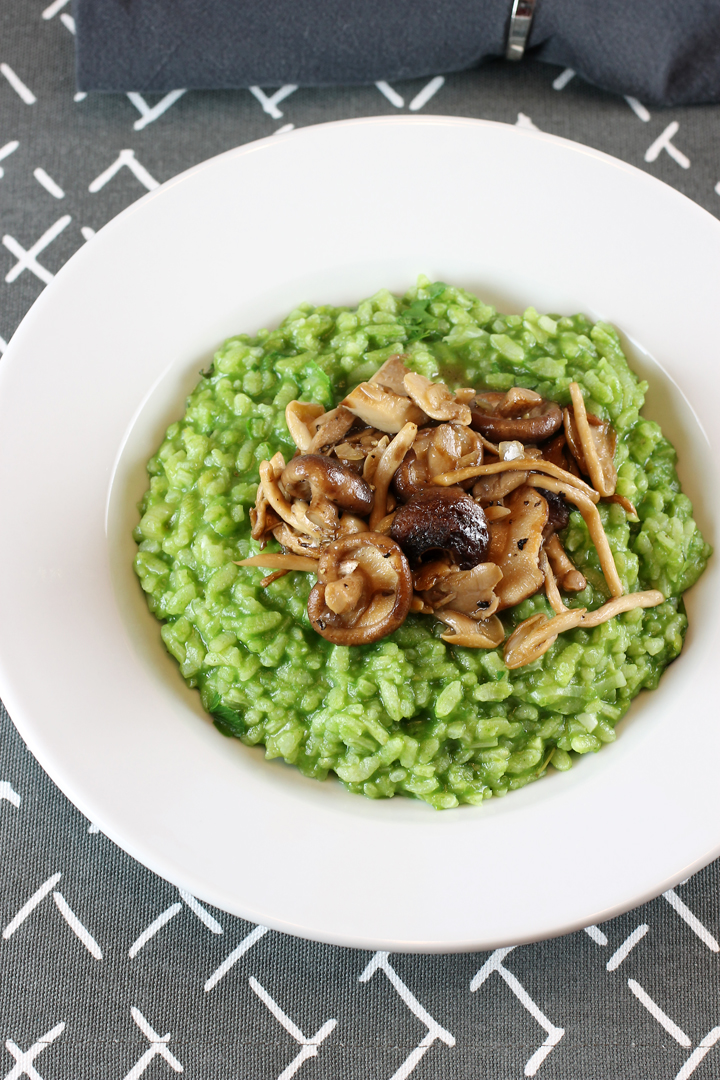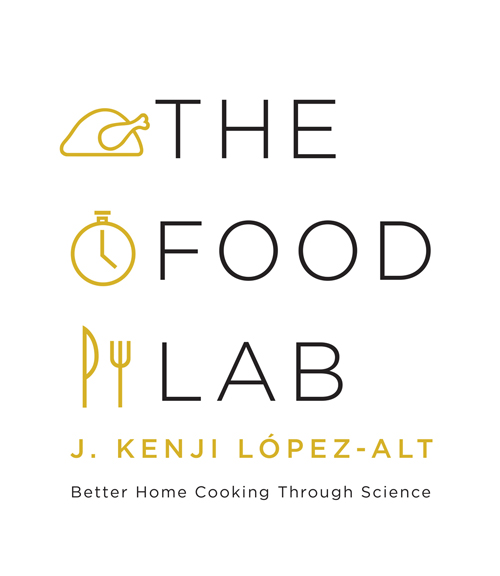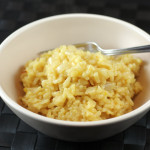It’s Easy Being — (And Making) — Green Risotto
I admit I was dubious. I was skeptical. I was bordering on being a non-believer.
Could one really make perfect risotto on the stove-top by pouring a load of stock into a pan with the rice, turning the heat down to the lowest possible setting, then leaving it pretty much alone except to stir it twice? Yes, twice.
Pshaw.
But I should have never doubted J. Kenji Lopez-Alt.
After all, he’s the man. He’s so meticulous and precise that he’s like a one-man Cook’s Illustrated test kitchen (where he used to work, by the way). The San Francisco-based managing culinary director of Serious Eats, Lopez-Alt is a restaurant-trained chef and the author of the “Food Lab” column, as well as a regular columnist for Cooking Light magazine.
His new book, “The Food Lab: Better Home Cooking Through Science” (W.W. Norton & Company), of which I received a review copy, is a must-have on your shelf. In fact, this past Sunday, it was named “Cookbook of the Year” by the International Association of Culinary Professionals.
The 958-page book is more than a cookbook. It’s a “how” and a “why” of cooking techniques. And Lopez-Alt has done all the hard work to ascertain when to use which method to attain the best results. It’s all done in easy to understand language with a sense of humor to boot.
Want to make the fluffiest, tastiest pancakes? The key is whipping the egg whites separately and not skimping on the fat (buttermilk and sour cream), which adds flavor and tenderness. Want to try your hand at making homemade ricotta? Lopez-Alt instructs, and gives precise times for draining it to achieve whatever texture you most desire. Want to age your own beef at home? He tells you how (it will involve putting a desk fan in a dedicated mini refrigerator).
So how is it possible to make risotto without stirring it constantly the old-fashioned way? Lopez-Alt discovered:
- The starch on the outside of the rice grains is what thickens the sauce in a risotto. Releasing that starch into the stock by briefly soaking the rice in it beforehand means you no longer have to stir the risotto non-stop when cooking in order to get that perfect creamy texture.
- Â Using a wide, shallow pan allows the rice to cook more evenly. So does using very low heat.
Indeed, after following his instructions to stir the rice into the cold stock, then drain the rice almost immediately, I could see a layer of cloudy starchy liquid forming at the bottom of the stock.
When I poured almost all of the stock into the pan with the rice, creating a very soupy mixture, then turned down the burner to its lowest setting, I thought there was no way the rice was going to absorb all that liquid on barely any heat. But sure enough, it did.
The risotto gets its vivid green hue from a puree of parsley, tarragon, spinach and green onions that’s stirred in just before serving. Each serving gets topped with a satisfying saute of wild mushrooms made even more meatier tasting by the sly addition of a little soy sauce.
It’s a risotto that’s beautiful to look at. And a delight to spoon into.
While you definitely won’t strain your arm muscles making this miraculous, almost no-stir risotto, you will have a good number of bowls and pans to wash afterward. I won’t lie about that. But your better half might just be so thrilled that you’re now vowing to make risotto more frequently that he won’t mind doing the clean-up for you. Mine sure didn’t.
Green Risotto with Mushrooms
(Serves 4 to 6)
6 cups homemade or canned vegetable stock or water
1 1/2 cups risotto-style rice such as Arborio, Carnaroli or Vialone Nano
1/2 cup loosely packed fresh parsley leaves
1/4 cup loosely packed fresh tarragon leaves
2 cups loosely packed spinach leaves
4 scallions, whites finely chopped, greens reserved separately
1/4 cup extra-virgin olive oil
2 medium cloves garlic, minced or grated on a Microplane (about 2 teaspoons)
2 tablespoons canola or vegetable oil
8 ounces mixed wild mushrooms such as trumpet royale, chanterelle, morel, or oyster, cut in half if large
1 small shallot, minced (about 2 tablespoons)
1 teaspoon lemon juice and 1 teaspoon grated zest (from 1 lemon)
1 teaspoon soy sauce
Kosher salt and freshly ground black pepper
Combine the stock and rice in a large bowl. Agitate rice with your fingers or a whisk to release the starch. Pour into a fine-mesh strainer set over a 2-quart liquid measure or large bowl and allow to drain for 5 minutes, stirring the rice occasionally. Reserve the stock, transferring it to a medium saucepan.
Finely chop 1 tablespoon each of the parsley and tarragon. Cover with a damp paper towel and refrigerate.
Bring the stock in the saucepan to a boil over high heat. Prepare a large ice bath. Add the spinach, the remaining parsley and tarragon leaves, and the scallion greens to the boiling stock, pressing down with a wire-mesh spider to submerge them, and cook for 30 seconds, then lift out with the spider, transfer to the ice bath, and chill completely. Remove the stock from the heat.
Transfer the blanched greens to the jar of a blender and add 1/2 cup of the stock. Blend on high speed until completely smooth, about 30 seconds. Transfer to a small bowl and set aside.
Heat the olive oil in a 12-inch heavy-bottomed skillet over medium-high heat until shimmering. Add the rice and cook, stirring and tossing frequently, until all the liquid has evaporated; the oil is bubbling, and the rice has begun to take on a pale golden blond color and nutty aroma, about 3 minutes. Add the garlic and scallion whites and cook, stirring until aromatic, about 1 minute.
Add all but 1 1/2 cups of the stock to the skillet. Stir the rice once, cover, and reduce the heat to the lowest setting. Cook the rice for 10 minutes, undisturbed. Stir once, shake the pan gently to redistribute the rice, cover, and continue cooking until the liquid is mostly absorbed and the rice is tender with just a faint bite, about 10 minutes longer.
Meanwhile, heat the canola oil in a 10-inch skillet over medium-high heat until shimmering. Add the mushrooms and cook, tossing occasionally, until well browned, about 5 minutes. Add the shallot and cook, stirring, until aromatic, about 30 seconds. Carefully, add 1/4 cup of the stock, the lemon juice, and soy sauce. Remove from the heat, toss to combine, and season to taste with salt and pepper. Set aside.
Remove the lid from the risotto, add the remaining broth, increase heat to high, and cook, stirring and shaking the rice constantly, until thick and creamy. Off the heat, stir in the green puree, lemon zest, and chopped parsley and tarragon. Season to taste with salt and pepper. Serve immediately on hot plates, topping the risotto with the mushrooms and their pan juices.
From “The Food Lab” by J. Kenji Lopez-Alt
More Risotto Methods: Rice-Cooker Risotto Milanese




I’ve heard so many good things about that book — gotta get it. This risotto recipe is brilliant. Good stuff — thanks so much.
+1 on his book, which I have right here. Basically, if Kenji told me to cook egg shells in anchovy juice, I would. He’s a wizard.
So pretty, and I can’t believe it’s so easy to make it!
What a cool book!
i don’t think i’ve admitted it, but j kenji lopez-alt is pretty much my idol. i love his methods and appreciate his drive and everything he’s discovered for us!
Moe: I’m with you on that. The book is so interesting!
Grace: You have good taste in idols.
He really seems to love the science side of cooking and seeing the effect of timing on things from the articles of his that I’ve read. Sounds like a great cookbook.
That’s a very pretty dish with the color green, I’ve done similar using spring peas. I like the idea of not having to watch the risotto cook, but I am dubious with my electric stovetop. It always runs high even when I put it on simmer. But in a way I guess it’s like cooking rice since it’s covered?
I’ve been wanting this book!
Wow, I need to get this book! I also want to try your recipe with sharp cheese, do you think it would go well? Thanks!
Rach’s Recipes: I think some grated Parmesan would be great, especially because mushrooms have such an affinity for cheese. Enjoy!
I always rinse rice. Is it reommended in this recipe? Im concerned of loosing too much starch.
Elena: I wouldn’t rinse it. When you’re making risotto, you want all that great starch because it’s what makes the dish so nice and creamy.
Thank you very much, Carolyn for confirming.
Definitely going to check out the book. The risotto looks fabulous!
Elena: You’re very welcome. Happy cooking!